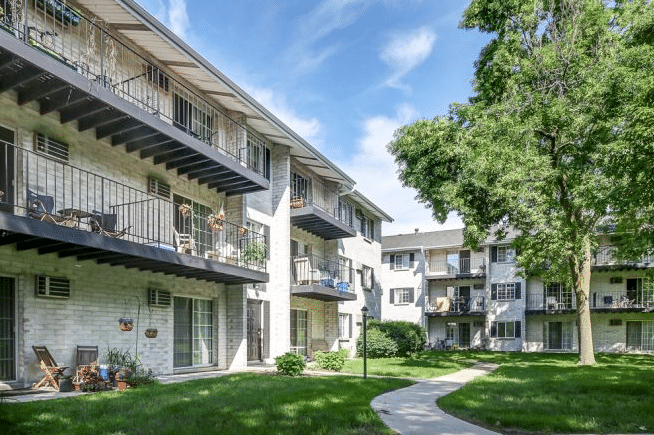This year, the Biden-Harris Administration announced new actions to protect renters and promote rental affordability alongside a Blueprint for a Renters Bill of Rights. This white paper isn’t legally binding; it is “a statement of principles; it is not binding and does
not itself constitute U.S. government policy. It does not supersede, modify, or direct an
interpretation of any existing Federal, state, or local statute, regulation, or policy.”
Independent landlords should be aware of what this document says as different pieces of legislation are pitched around the country. Still, it’s important not to fall into an us-versus-them mindset with your tenants. Protecting renters from unscrupulous landlords and big corporate investors is essential for a well-functioning housing market.
Did You Know?:
No comprehensive federal laws protecting renters exist. Instead, renters find patchwork protection through the combination of the Fair Housing Act, Americans with Disabilities Act, the Violence Against Women Act, and Fair Credit Reporting Act.
Renters Bill of Rights Explained
The 19-page document begins with an expanded disclaimer: “The appropriate application of the principles set forth in the Blueprint for a Renters Bill of Rights depends significantly on the context in which the principles are being applied. In some circumstances, application of these principles in whole or in part may not be appropriate. Even in contexts where these principles may not apply in whole or in part, Federal departments and agencies remain subject to existing laws, regulations, and policies that govern rental housing.”
In other words, this white paper describes ideas, not laws.
There are five critical principles in the Blueprint for a Renters Bill of Rights. The White House explains why each principle is important and how to move from principle to practice – so let’s dive in.
First Principle: Access to Safe, Quality, Accessible, and Affordable Housing
The Blueprint for a Renters Bill of Rights underscores a commonly heard piece of advice: no one should pay more than 30% of their household income on housing costs. Since the COVID-19 pandemic, rents have risen nearly 26% nationally, and “higher out-of-pocket rent burdens are associated with increased likelihood of postponing medical services and negative health outcomes, particularly for households with the highest cost burdens,” the report notes.
This principle reflects the need for affordable housing and goes further to say that owners of rental housing should:
- Ensure that [rentals] meet habitability standards…free of health and safety hazards, like mold or lead
- Provide services and amenities as advertised or included in the lease
- Ensure that the residential housing unit is well maintained, including common areas
- Use minimally burdensome application and documentation requirements along with fair and equal tenant screening practices
- Increase rent reasonably, acknowledging that rents may need to increase to cover operating costs, and should be transparent and fair to prevent gouging
Moving From Principle to Action: Access to Safe, Quality, Accessible, and Affordable Housing

Some of the action has already begun. To reduce housing costs, the Biden Administration released a Housing Supply Action Plan outlining a broad set of legislative and administrative actions that would help close the housing supply gap in five years. The report also states that “the President’s Budget proposed the largest expansion of the Housing Choice Voucher program in decades as a down payment toward ensuring every extremely low-income household can access affordable housing” in fiscal years 2022 and 2023.
Additional actions include increasing housing affordability and access through research from:
- The Federal Trade Commission
- The Department of Justice
- FHFA and the Enterprises (Fannie Mae and Freddie Mac)
- The Department of Housing and Urban Development (HUD)
Most of these offices and organizations will be conducting outreach to hear the opinions of tenants and landlords alike.
To improve housing quality:
- The U.S. Department of Agriculture (USDA) will pilot a program to institute uniform and independent inspection protocol across its housing portfolio
- HUD is launching the National Standards for the Physical Inspection of Real Estate (NSPIRE) nationwide in fiscal year 2024, which was designed to promote HUD’s goal of reducing health and safety hazards in the home
- FHFA, Freddie Mac, and Fannie Mae are updating the Enterprises’ radon testing for multifamily housing to make sure they’re comprehensive, data-informed, fully understood by landlords, and properly implemented4
Second Principle: Clear and Fair Leases
A lease is a legally binding contract; the Blueprint of a Renters Bill of Rights aims to have renters clearly understand their lease with defined rental terms, access to rights, and outlined responsibilities. Per the white paper, leases should not include:
- Mandatory arbitration clauses
- Unauthorized terms
- Hidden/illegal fees
- False representations
- Other unfair or deceptive practices
Transparency is key, and making the lease accessible by having it written in simple and clear language is crucial.
The majority of landlords do a great job at presenting fair leases, but this principle ensures that the single largest expense in most renters’ lives is easy to understand along with the responsibilities they must uphold. As the white paper highlights, “leases have increasingly used unenforceable terms, meaning a provision that would not hold up if contested in court, such as disclaimer of liability of negligence” as found in a 2022 study of Philadelphia leases. This trend of unenforceable leases is thought to be caused by landlords sharing lease forms that may not be binding in their state or city.
Pro Tip:
Using a state-specific lease built for your unique rental situation is the best way to protect yourself from falling victim to unprofessional, out-of-date documents a landlord states away wrote himself nine years ago.
Moving From Principle to Action: Clear and Fair Leases
In 2022, HUD released new recommendations to include costs, such as security deposits, as an eligible use of administrative fees that public housing agencies receive to operate the housing voucher program. Additionally, USDA plans to institute a broad set of actions to advance clear leases and make sure tenants can seek “compliance with lease terms without facing retaliation across its portfolio of 400,000 units of multifamily rental housing.”
USDA is also creating a tenant grievance FAQ outlining steps for tenants appealing a management decision to be distributed to owners and property managers.
Third Principle: Education, Enforcement, and Enhancement of Rights
“Federal, state, and local governments should do all they can to ensure renters know their existing legal rights, and to protect renters from unlawful discrimination and exclusion that can take many different forms. Government bodies at all levels should ensure that rights and protections provided under the Fair Housing Act and other federal laws and regulations, as well as state and local fair housing laws and regulations, are known and enforced,” the Blueprint for a Renters Bill of Rights states.
The Fair Housing Act bans discrimination based on the seven protected classes, which are:
- Race
- Color
- Religion
- Sex (including sexual orientation and gender identity)
- Disability
- Familial Status
- National origin
This principle is important because discrimination and exclusion have been significant factors shaping the housing market since its inception. The Fair Housing Act is important, but there’s a persisting need to strengthen existing laws and enforcement efforts while passing new laws to address the United States’ fair housing needs. As the report explains, “millions of renters experience discrimination in the housing market annually, although a large share never report it.”
Because discrimination is amorphous, it can be hard to identify. Since the addition of algorithms in the screening process, things have gotten even more nebulous. That’s why it’s so important for housing providers to share adverse action notices for applicants who are denied housing due to the results of their screening report. Failing to do so prevents tenants from correcting errors or addressing other reasons that might affect their ability to access housing in the future.
Moving From Principle to Action: Education, Enforcement, and Enhancement of Rights
HUD is finalizing a rule to “clarify that the Fair Housing Act continues to bar practices with unjustified discriminatory effects notwithstanding efforts to weaken its reach.” HUD has also proposed the Affirmatively Furthering Fair Housing rule “to strengthen and better align grantee planning efforts to advance fair housing goals.”
The Housing and Civil Enforcement Section of the Civil Rights Division at the DOJ has taken recent enforcement actions to make sure providers don’t unlawfully discriminate against renters:
- United States v. Centanni (D.N.J.) in relation to sexual harassment
- United States v. Crimson Management,L.L.C. et al. (N.D. Ga.) in relation to race discrimination
- United States v. Miyamoto (D. Wy.) in relation to disability discrimination
The Consumer Financial Protection Bureau (CFPB) has made a number of moves, including:
- Releasing advisory opinions affirming that “background check companies that use poor matching procedures, such as name-only matching can violate the Fair Credit Reporting Act’s accuracy and permissible purpose provisions due to the high risk of including information on the wrong tenant in screening reports for rental properties”
- Identifying guidance or rules that ensure the background screening industry adheres to the law

Fourth Principle: The Right to Organize
Protesting is as American as apple pie – and the Blueprint of a Renters Rights Bill aims to preserve that right for tenants. Unfortunately, there is “abundant research that shows organizing has been met with retaliation from housing providers or property managers, such as prohibiting the use of public spaces, threatening eviction, or actually filing an eviction notice.”
Additionally, this principle suggests that a renter should know their landlord and how to contact them to engage in essential conversations about the property. That engagement is key to a healthy, productive landlord-tenant relationship.
Moving From Principle to Action: Education, Enforcement, and Enhancement of Rights
While tenants in different types of HUD programs have recognized rights to organize, there’s still work to be done for the renters as a whole. To that end:
- “HUD is currently working on webinar training
- HUD’s Office of Multifamily Housing is developing a NOFO to distribute appropriated funds to support tenant capacity building activities, like tenant education and outreach
- HUD’s Office of Multifamily Housing will build on existing training/technical assistance strategies to promote engagement with residents and implementation of the Rental Assistance Demonstration (RAD) resident protections”
Fifth Principle: Eviction Prevention, Diversion, and Relief
Evictions are terrible for everyone involved. The cost of eviction is high, both monetarily and emotionally. The Blueprint for a Renters Bill of Rights wants to give renters access to resources that help them avoid eviction, make sure the legal process during an eviction is fair, and avoid housing instability in the future. Preventing evictions means making sure renters have access to just- or good-cause eviction protections that require a justified cause to evict a tenant, and the tenant must receive adequate notice if their lease isn’t being renewed.
The blueprint further posits that “renters should be able to avoid an eviction filing through alternatives to the eviction system, such as eviction diversion and grievance procedures… like negotiation, mediation, or arbitration.”
Acceptable resolutions from these processes could include:
- A grace period for late rent
- The ability to preserve tenancy by curing the lease violation [aka paying rent or correcting the issue]
- Access to a standardized dispute resolution process before litigation
- Opportunities to participate meaningfully in a pre-eviction diversion program
Moving From Principle to Action: Eviction Prevention, Diversion, and Relief
The Emergency Rental Assistance program’s over 8 million payments to renters and their housing providers to prevent evictions constitute part of the over $769 million price tag that’s been spent on housing stability services since 2020. Additionally:
- “HUD will issue a notice of proposed rulemaking, to build upon the previously issued Interim Final Rule, that will propose to require that PHAs administering a public housing program and owners of project-based rental assistance properties provide no less than 30 days advanced notification of lease termination due to nonpayment of rent.
- HUD will award $20 million for the Eviction Protection Grant Program in fiscal year 2023, which will fund non-profits and governmental entities to provide legal assistance to low-income tenants at risk of or subject to eviction.
- FHFA, Freddie Mac, and Fannie Mae have indicated their commitment to publishing information about the Enterprise Look-Up Tools, which allow tenants to determine if their property is backed by Fannie Mae or Freddie Mac financing and requires the 30-day notice to vacate for non-payment of rent. The Enterprises will continue to publish this information and assess how the individual tools might be enhanced to improve utility.”
Now that you understand the Blueprint for a Renters Bill of Rights, you’re better prepared to form an opinion about each of the five principles contained therein.
In terms of next steps, the Biden Administration launched the Resident-Centered Housing Challenge, “a call to action to housing providers and other stakeholders to strengthen practices and make their own independent commitments that improve the quality of life for renters. The Challenge, which [began in] the Spring of 2023, also encourages states, local, Tribal, and territorial governments to enhance existing policies and develop new ones that promote fairness and transparency in the rental market.” Landlords looking to make their voices heard should attend local legislative events to stay up to date on the impact these ideas will have on their rental property management business.
You know what’s easier than wrapping your head around proposed legislation? Streamlining your property management with software for landlords. Create your free TurboTenant account today!







